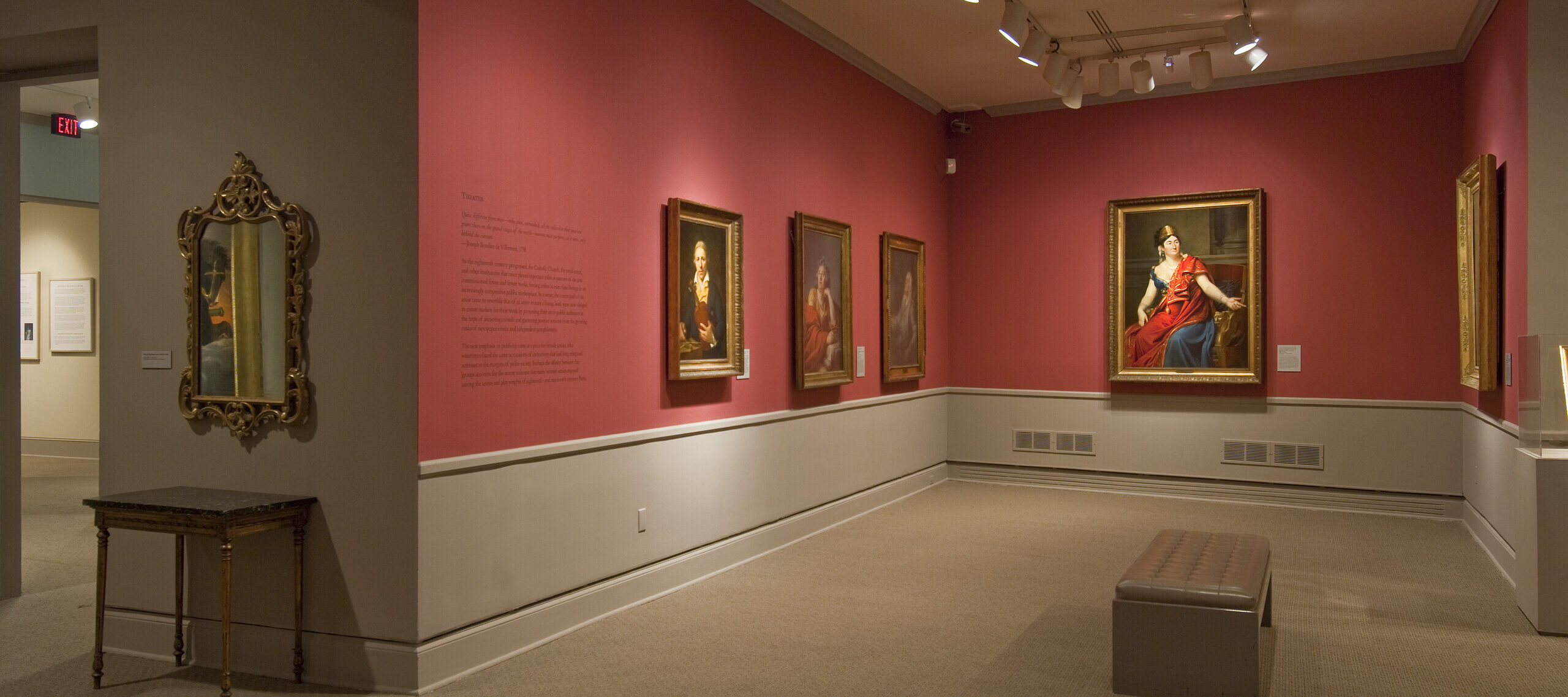Traveling was as much an obstacle for French women in the 18th and 19th centuries as was professional painting. While today’s Europe is stitched with high-speed rail and affordable flight paths, the women featured in NMWA’s Royalists to Romantics: Women Artists from the Louvre, Versailles, and Other French National Collections faced long, arduous journeys when they found opportunities to travel the continent. Roads were often not easily traversable, and men dictated when a family traveled and how money was spent.
There were scholarships available for male artists who wished to go elsewhere to paint, but none for women. One such award was the Rome Prize, which funded male artists to study at the French Academy in Rome. Not until 1925 did a woman, Odette Pauvert, win the “First Grand Prize” in the contest. Fortunately, female artists like Élisabeth Louise Vigée-LeBrun, Louise Joséphine Sarazin de Belmont, and Antoine Cécile Hortense Haudebourt-Lescot accepted the challenge of finding their own way.
The renowned Élisabeth Louise Vigée-LeBrun, who attended the Academié Royale de Peinture et de Sculpture, was the first to prove that she did not require male assistance to paint abroad. A wunderkind with her own studio at the age of 15, Vigée-LeBrun garnered the support of many patrons in France, including Queen Marie Antoinette. After the outbreak of revolutionary violence in 1789, however, she fled France with her daughter in search of more stability. Five years later, her husband divorced her in absentia, seizing her sizable assets. Still, Vigée-LeBrun continued her tour through Florence, Rome, Naples, Vienna, Saint Petersburg, and London. Along the way, she painted great international leaders and forged a legacy as the best-known woman artist of her generation.
Sarazin de Belmont was the next great woman artist to travel, emerging in the early 19th century. Her passion was landscape portraits, which were becoming increasingly popular, as well as being seen as more acceptable subjects for women. Using her own funds, Sarazin de Belmont traveled from Brittany to Italy, sketching and painting from life. Her teacher, Pierre-Henri Valenciennes, instilled in his students the notion that landscape portraits are best created from on-site studies and meticulous observation before selecting details to record. Sarazin de Belmont carried this philosophy through all 80 years of her life, too enraptured with the world to sit in a studio and paint portraits.
Perhaps the only pursuit more difficult than traveling was painting ambitious “history” scenes while traveling. One of the most versatile female artists of the 19th century was Antoine Cécile Hortense Haudebourt-Lescot. She took on the dual task of history painting, a genre that involved complex compositions of human figures, and traveling when she moved to Italy in 1807. She was following her teacher, Guillaume Lethière, who had just been named the director of the Académie de France in Rome. Haudebourt-Lescot became friends with a number of male artists, including the sculptor Antonio Canova, whom she later painted in her 1812 work Kissing of the Feet in St. Peter’s, Rome. In her lifetime, Haudebourt-Lescot exhibited more than 110 portraits, genre scenes, and history paintings in the Salons, winning first-class medals in 1810 and 1827.
Visit NMWA to see how these women and others interpreted the world of travel, knowledge, and power in Royalists to Romantics, on view through July 29.
